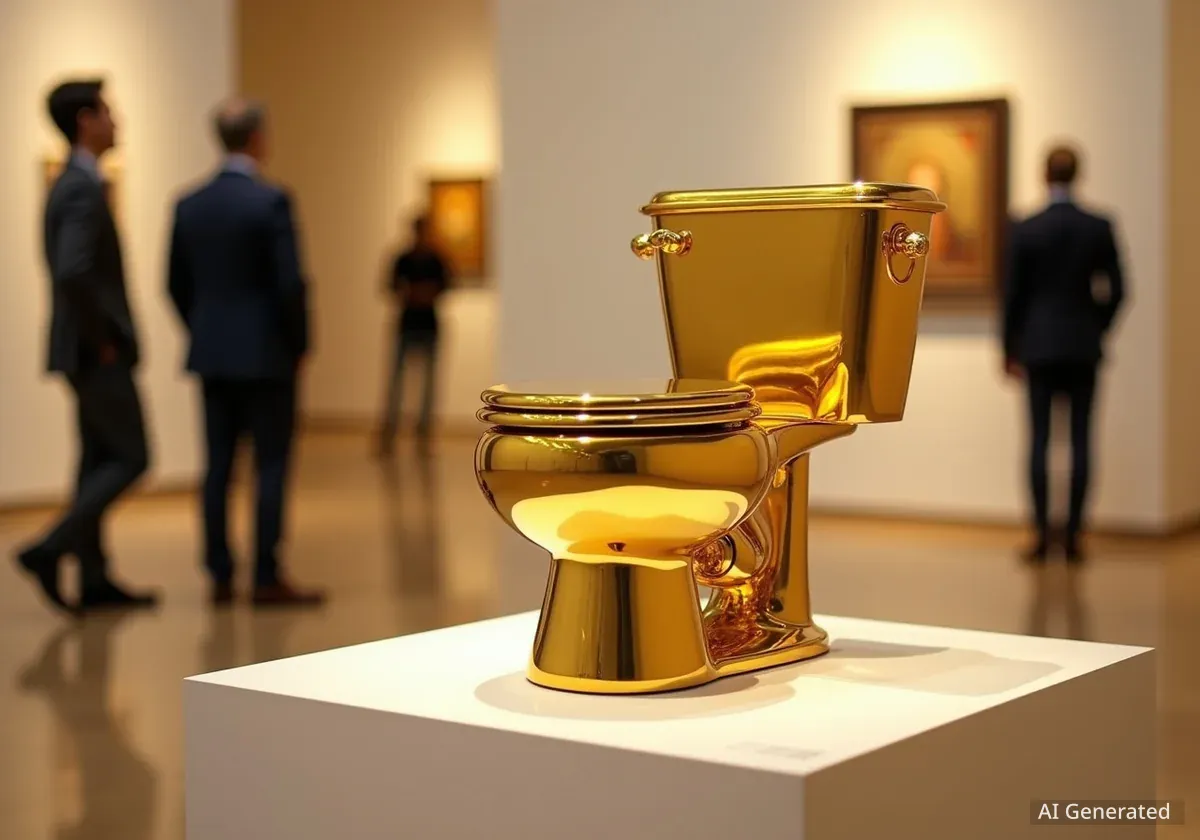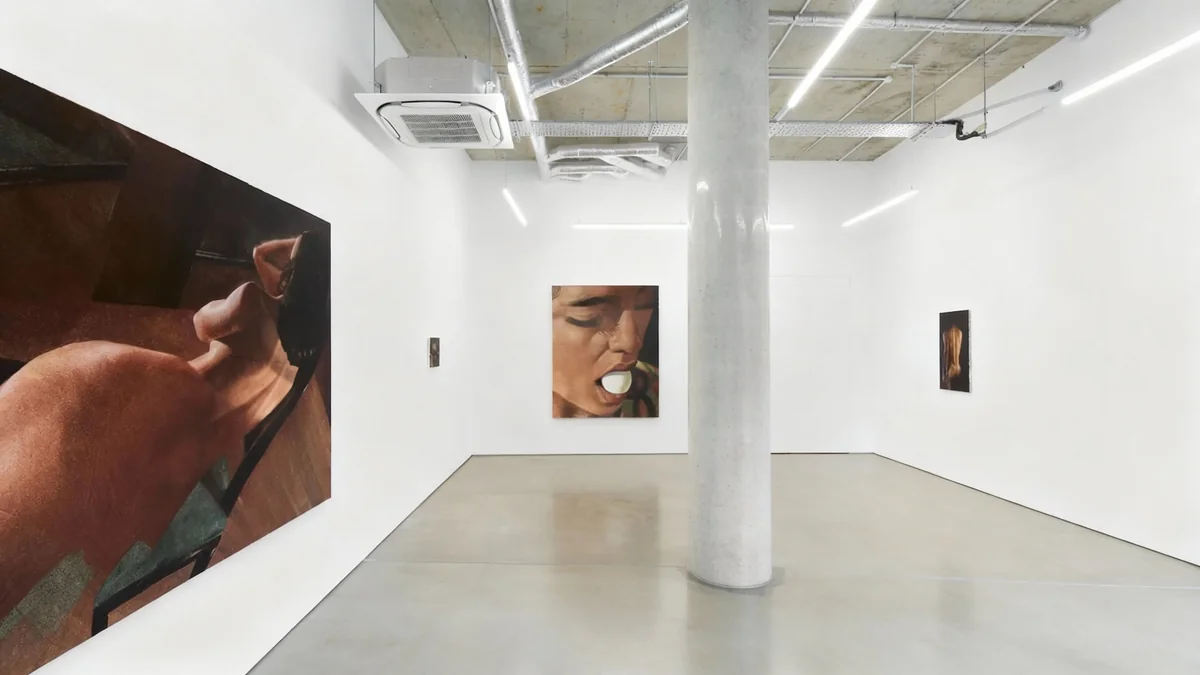A second edition of Maurizio Cattelan's 18-karat solid gold toilet, titled "America," is set to debut on the art market next month. This marks a significant moment for the artwork, which gained global notoriety after its predecessor was stolen from Blenheim Palace in 2019.
Key Takeaways
- A second edition of Maurizio Cattelan's "America" solid gold toilet will be auctioned by Sotheby's.
- The starting bid will be based on the toilet's inherent gold value, estimated around $10 million.
- The artwork will be displayed at Sotheby's New York headquarters, but visitors cannot use it.
- The first edition was stolen from Blenheim Palace and remains unfound.
The Return of "America" to Public View
The opulent, fully functional sculpture, weighing 220 pounds, will be offered by Sotheby's in New York on November 18. This particular edition has been held in private hands since 2017, remaining out of the public eye until now. Its exhibition at Sotheby's new headquarters will allow a limited public viewing for 10 days leading up to the sale.
Unlike its initial display at the Guggenheim Museum in 2016, where an estimated 100,000 visitors were able to use it, the toilet will not be usable this time. Sotheby's cited security concerns as the primary reason for this restriction. The door to the bathroom where it will be installed will remain open.
Artwork Details
- Artist: Maurizio Cattelan
- Title: "America"
- Material: 18-karat solid gold
- Weight: 220 pounds
- Estimated Value: Starting at approximately $10 million (based on gold market)
Valuation and Conceptual Basis
The auction for this edition of "America" will break from traditional bidding processes. The starting figure will be directly tied to the inherent value of the gold itself, fluctuating with the market price right up until the bidding begins. This approach places the initial valuation in the range of $10 million, considering recent record highs in gold prices. The final sale price will then include whatever additional value collectors assign to it as an artwork.
"The starting bid in accordance with the price of gold was really a way to lean into the very essence of the conceptual basis behind the artwork, which is largely to draw attention to the difference between a work’s artistic value, and a work’s inherent material value," explained David Galperin, Sotheby’s head of contemporary art.
This method highlights Cattelan's ongoing critique of the art market. It forces a direct comparison between the intrinsic material worth of an object and its perceived artistic significance. This contrasts sharply with some of Cattelan's other works, such as "Comedian," a banana duct-taped to a wall, which sold for $6.24 million despite its negligible material value.
The Saga of the First Edition
The first edition of "America" gained widespread attention and infamy when it was stolen from Blenheim Palace, Winston Churchill’s birthplace in the English countryside, in 2019. Thieves, armed with sledgehammers, carried out the audacious heist in just five minutes. Despite the conviction of the perpetrators earlier this year, the artwork has never been recovered.
Authorities believe the stolen toilet was likely cut up or melted down for its considerable gold value, which was estimated to be in the millions. The theft underscored the dual nature of the artwork: its status as a conceptual piece and its substantial material worth.
Historical Context
Maurizio Cattelan's "America" draws a direct lineage from landmark Modern art, particularly Marcel Duchamp's 1917 work, "Fountain." Duchamp's piece, an upside-down urinal, challenged traditional notions of what constitutes art and the role of the artist. Cattelan's work extends this critique into the 21st century, using a highly valuable, functional object to comment on wealth, power, and the art world itself.
Cattelan's Ongoing Critique
Cattelan has consistently used his art to question societal norms and the structures of the art world. "America" serves as a multifaceted commentary, touching on themes of wealth, consumerism, and the United States, as well as the often-lofty language used in art criticism and press statements. The Guggenheim once described the original installation as an opportunity for "unprecedented intimacy with a work of art."
The artist had previously stated that he created more than one edition of "America." Sotheby's believes that while it is an edition of three, this second edition may be the only other physical one currently in existence, as the third is not thought to have been fabricated yet.
Cattelan's work challenges how art is valued, displayed, and perceived. His ability to confront these concepts in a clear and impactful way is a key part of his success and the enduring relevance of pieces like "America."




